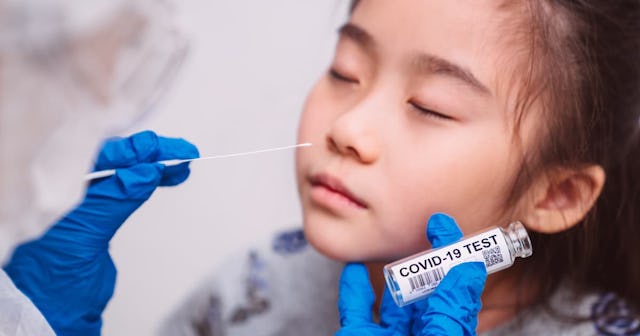New Report Finds 97,000 Kids Tested Positive For COVID-19 In Two Weeks

Understanding the impact to kids and how they transmit COVID is critical
As parents continue to weigh options for a fall school reopening amid a global pandemic, nearly 100,000 children have tested positive for the coronavirus in the last two weeks of July, a new report from the American Academy of Pediatrics (AAP) finds.
The U.S. topped five million cases of coronavirus this morning, which means we now have close to a quarter of global cases of the virus and the most reported deaths in the world at 162,441, according to John Hopkins University. With research still determining the impacts of the virus in children, the AAP reported 97,000 kids tested positive in the U.S. from July 16 to July 30, bringing the total cases in children to 338,000.
In order to continue to research and study the impacts of the virus in kids and the role they play in transmitting the virus to others, CBS News reports that Vanderbilt University’s Dr. Tina Hartert is leading a government-funded study that sent test kits sent to 2,000 families. “They are taught how to collect these samples, and then the samples are sent back by the families to a central repository,” Hartert explained.
The rush to test more children comes as counties around the country determine back-to-school plans for the fall. While some schools in Georgia and Indiana have already gone back to in-person learning, the U.S. has already seen positive cases at alarming rates. And while kids have been shown to recover from the virus quicker than adults, how they spread the virus to others is of major concern.
The risk to kids, while lower, is still horrifying. More than 25 children died of the coronavirus in July alone, and a new CDC study shows Black and Hispanic kids are at an increased risk for developing symptoms requiring hospitalization.
“I suspect there are a lot of kids who may be shedding small amounts of virus without a whole lot of symptoms,” said Dr. Kenneth Alexander, chief of Pediatric Infectious Diseases at Nemours Children’s Hospital in Orlando.
“If you look at the mortality data and even the hospitalization data, children do really, really well. The majority of kids with COVID-19 probably don’t even come to medical attention,” Alexander said. “I’m much more worried about the 62-year-old diabetic lunch lady than I am about the kid getting a Sloppy Joe. So, as we think about opening our schools, I think the name of the game is still protecting the adults in the school environment.”
As parents make the best determination for their families regarding in-person learning, understanding the impacts on kids will continue to be top of mind for all involved.
Information about COVID-19 is rapidly changing, and Scary Mommy is committed to providing the most recent data in our coverage. With news being updated so frequently, some of the information in this story may have changed after publication. For this reason, we are encouraging readers to use online resources from local public health departments, the Centers for Disease Control, and the World Health Organization to remain as informed as possible.
This article was originally published on